
Rabbit Anti-BPTF antibody
Bromodomain and PHD finger containing transcription factor; Bromodomain PHD finger transcription factor; FAC 1; BPTF / FALZ; fac1; FALZ; Fetal Alz 50 clone 1 protein; Fetal Alz 50 reactive clone 1; Fetal Alzheimer antigen; Nucleosome remodeling factor; Nu
View History [Clear]
Details
Product Name BPTF Chinese Name 胎儿阿兹海默病抗原/核小体重塑因子抗体 Alias Bromodomain and PHD finger containing transcription factor; Bromodomain PHD finger transcription factor; FAC 1; BPTF / FALZ; fac1; FALZ; Fetal Alz 50 clone 1 protein; Fetal Alz 50 reactive clone 1; Fetal Alzheimer antigen; Nucleosome remodeling factor; Nucleosome remodeling factor subunit BPTF; Nucleosome remodeling factor, large subunit; NURF 301; NURF301. literatures Research Area Cell biology immunology Developmental biology Neurobiology Epigenetics Immunogen Species Rabbit Clonality Polyclonal React Species Human, Mouse, Rat, (predicted: Chicken, Dog, Cow, Rabbit, Sheep, Guinea Pig, ) Applications ELISA=1:5000-10000 IHC-P=1:100-500 IHC-F=1:100-500 ICC=1:100-500 IF=1:100-500 (Paraffin sections need antigen repair)
not yet tested in other applications.
optimal dilutions/concentrations should be determined by the end user.Theoretical molecular weight 338kDa Cellular localization The nucleus cytoplasmic Form Liquid Concentration 1mg/ml immunogen KLH conjugated synthetic peptide derived from human BPTF/FALZ: 2801-3046/3046 Lsotype IgG Purification affinity purified by Protein A Buffer Solution 0.01M TBS(pH7.4) with 1% BSA, 0.03% Proclin300 and 50% Glycerol. Storage Shipped at 4℃. Store at -20 °C for one year. Avoid repeated freeze/thaw cycles. Attention This product as supplied is intended for research use only, not for use in human, therapeutic or diagnostic applications. PubMed PubMed Product Detail This gene was identified by the reactivity of its encoded protein to a monoclonal antibody prepared against brain homogenates from patients with Alzheimer's disease. Analysis of the original protein (fetal Alz-50 reactive clone 1, or FAC1), identified as an 810 aa protein containing a DNA-binding domain and a zinc finger motif, suggested it might play a role in the regulation of transcription. High levels of FAC1 were detected in fetal brain and in patients with neurodegenerative diseases. The protein encoded by this gene is actually much larger than originally thought, and it also contains a C-terminal bromodomain characteristic of proteins that regulate transcription during proliferation. The encoded protein is highly similar to the largest subunit of the Drosophila NURF (nucleosome remodeling factor) complex. In Drosophila, the NURF complex, which catalyzes nucleosome sliding on DNA and interacts with sequence-specific transcription factors, is necessary for the chromatin remodeling required for transcription. Two alternative transcripts encoding different isoforms have been described completely. [provided by RefSeq, Jul 2008]
Function:
Histone-binding component of NURF (nucleosome-remodeling factor), a complex which catalyzes ATP-dependent nucleosome sliding and facilitates transcription of chromatin. Specifically recognizes H3 tails trimethylated on 'Lys-4' (H3K4me3), which mark transcription start sites of virtually all active genes. May also regulate transcription through direct binding to DNA or transcription factors.
Subunit:
Interacts with MAZ. Interacts with KEAP1. Part of the nucleosome-remodeling factor (NURF) complex which consists of SMARCA1; BPTF; RBBP4 and RBBP7. Interacts with histone H3K4me3 and to a lesser extent with histone H3-K4Me2.
Subcellular Location:
Cytoplasm. Nucleus. Note=In brains of Alzheimer disease patients, present in a subset of amyloid-containing plaques.
Tissue Specificity:
Ubiquitously expressed, with highest levels in testis. Present in kidney, liver and brain. In the brain, highest levels are found in motor cortex (at protein level).
Post-translational modifications:
Phosphorylation enhances DNA-binding. Phosphorylated upon DNA damage, probably by ATM or ATR.
Highly susceptible to proteolysis.
Similarity:
Belongs to the PBTF family.
Contains 1 bromo domain.
Contains 1 DDT domain.
Contains 2 PHD-type zinc fingers.
SWISS:
Q12830
Gene ID:
2186
Database links:Entrez Gene: 2186 Human
Omim: 601819 Human
SwissProt: Q12830 Human
Unigene: 444200 Human
Product Picture
Antigen retrieval: citrate buffer ( 0.01M, pH 6.0 ), Boiling bathing for 15min; Block endogenous peroxidase by 3% Hydrogen peroxide for 30min; Blocking buffer (normal goat serum,C-0005) at 37℃ for 20 min;
Incubation: Anti-BPTF Polyclonal Antibody, Unconjugated(SL11641R) 1:500, overnight at 4°C, followed by conjugation to the secondary antibody(SP-0023) and DAB(C-0010) staining
Tissue/cell: rat testis tissue; 4% Paraformaldehyde-fixed and paraffin-embedded;
Antigen retrieval: citrate buffer ( 0.01M, pH 6.0 ), Boiling bathing for 15min; Block endogenous peroxidase by 3% Hydrogen peroxide for 30min; Blocking buffer (normal goat serum,C-0005) at 37℃ for 20 min;
Incubation: Anti-BPTF Polyclonal Antibody, Unconjugated(SL11641R) 1:500, overnight at 4°C, followed by conjugation to the secondary antibody(SP-0023) and DAB(C-0010) staining
Tissue/cell: rat testis tissue; 4% Paraformaldehyde-fixed and paraffin-embedded;
Antigen retrieval: citrate buffer ( 0.01M, pH 6.0 ), Boiling bathing for 15min; Block endogenous peroxidase by 3% Hydrogen peroxide for 30min; Blocking buffer (normal goat serum,C-0005) at 37℃ for 20 min;
Incubation: Anti-BPTF Polyclonal Antibody, Unconjugated(SL11641R) 1:200, overnight at 4°C, followed by conjugation to the secondary antibody(SP-0023) and DAB(C-0010) staining
Bought notes(bought amounts latest0)
No one bought this product
User Comment(Total0User Comment Num)
- No comment

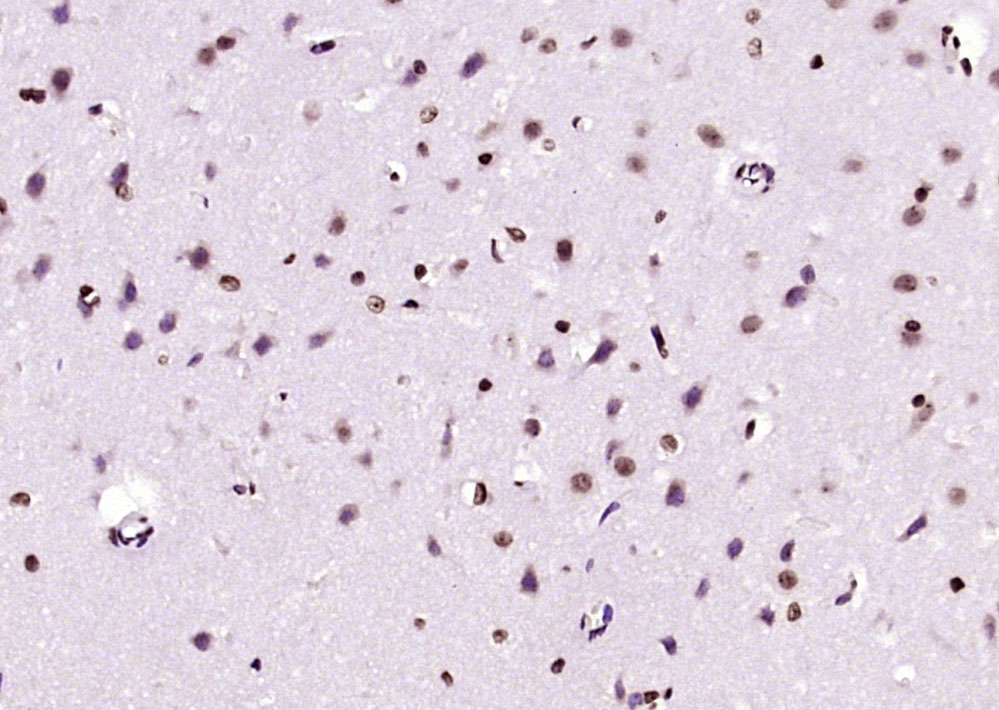
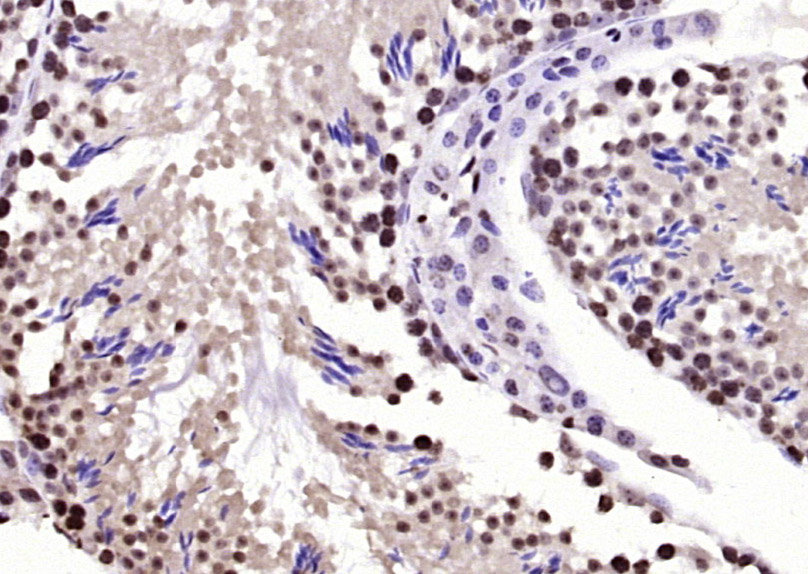
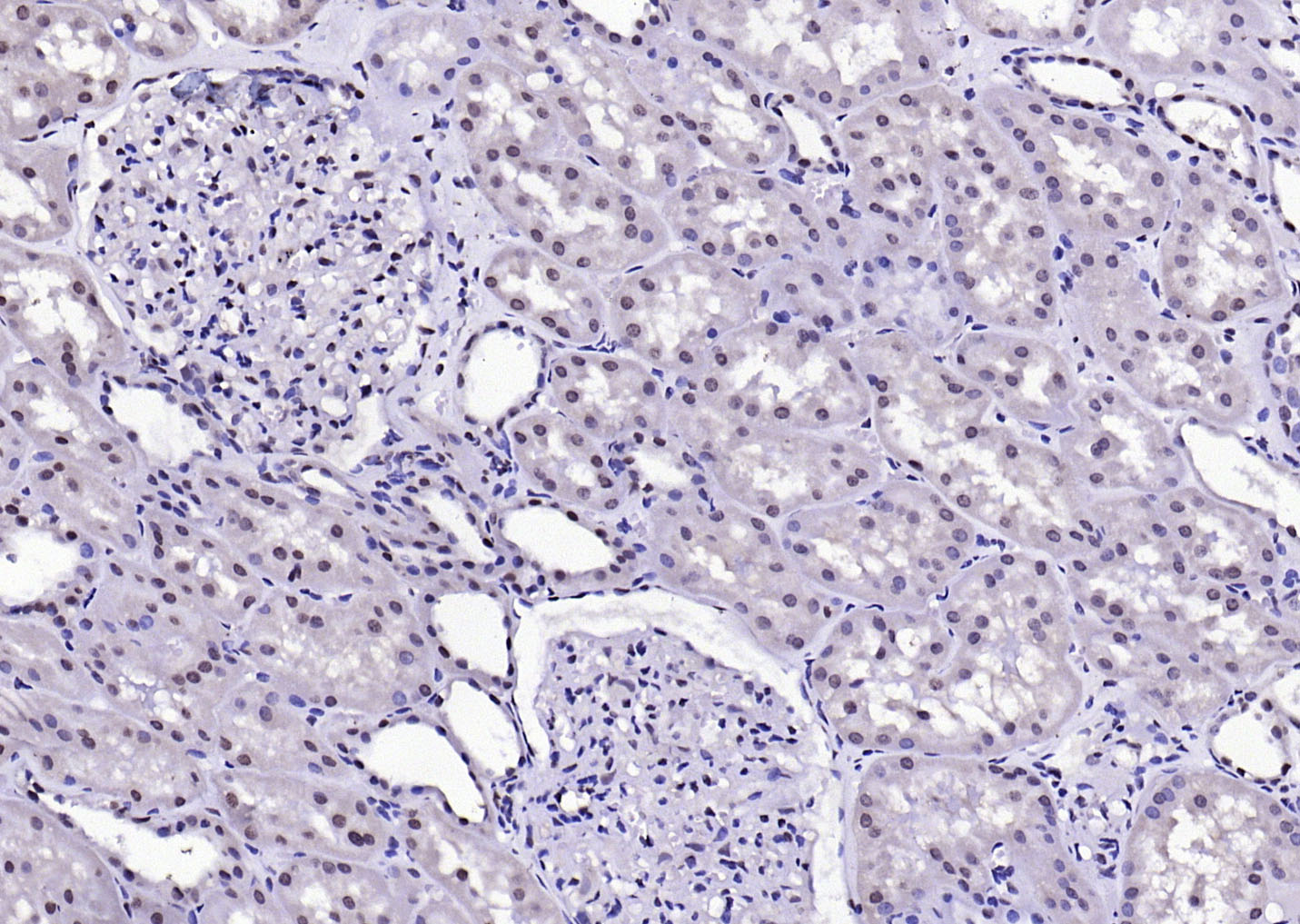
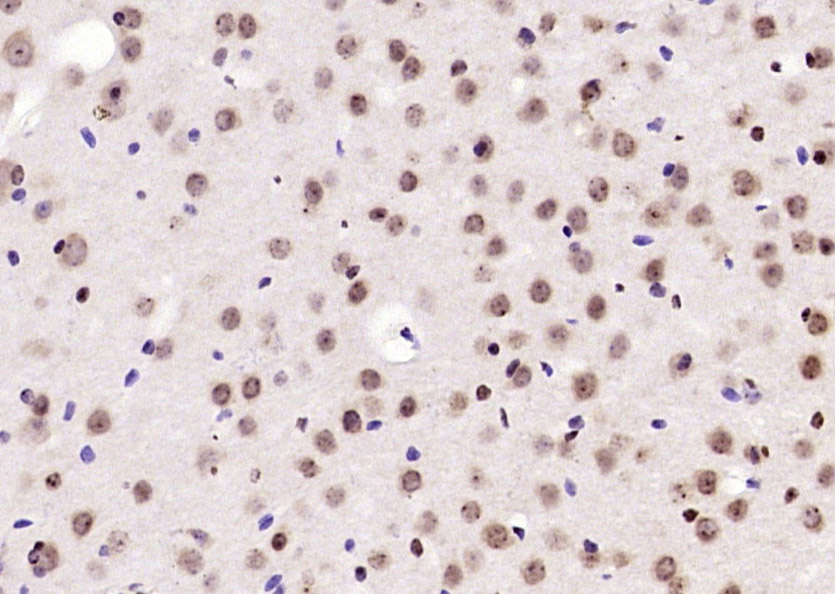
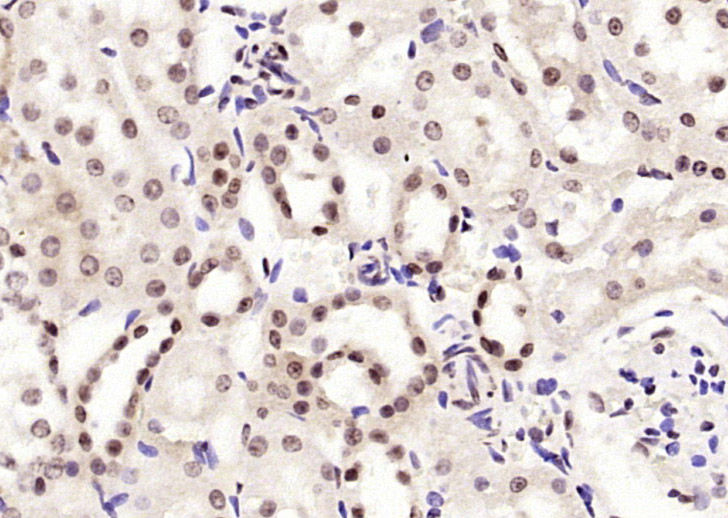
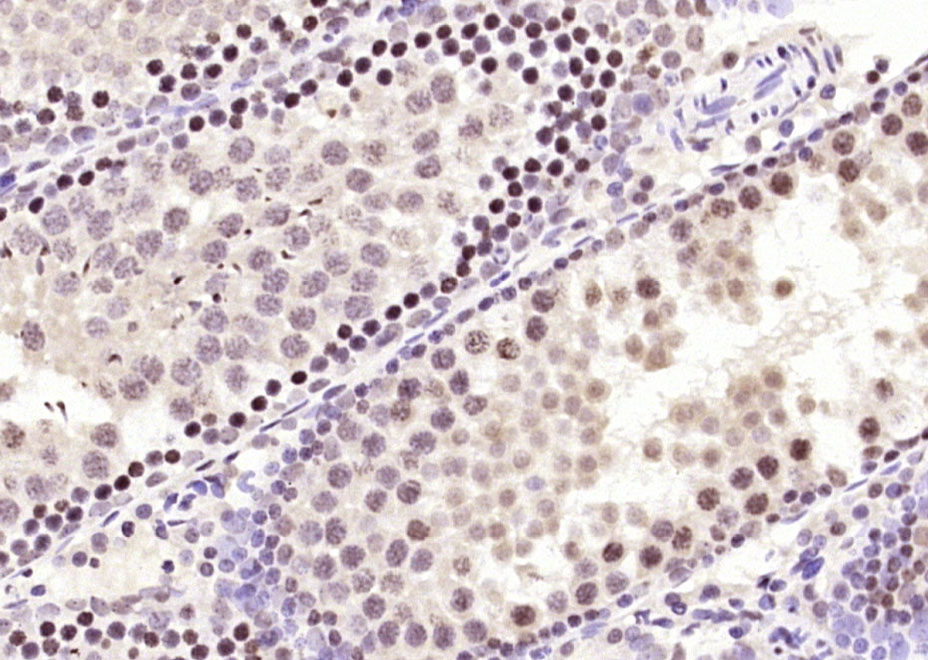
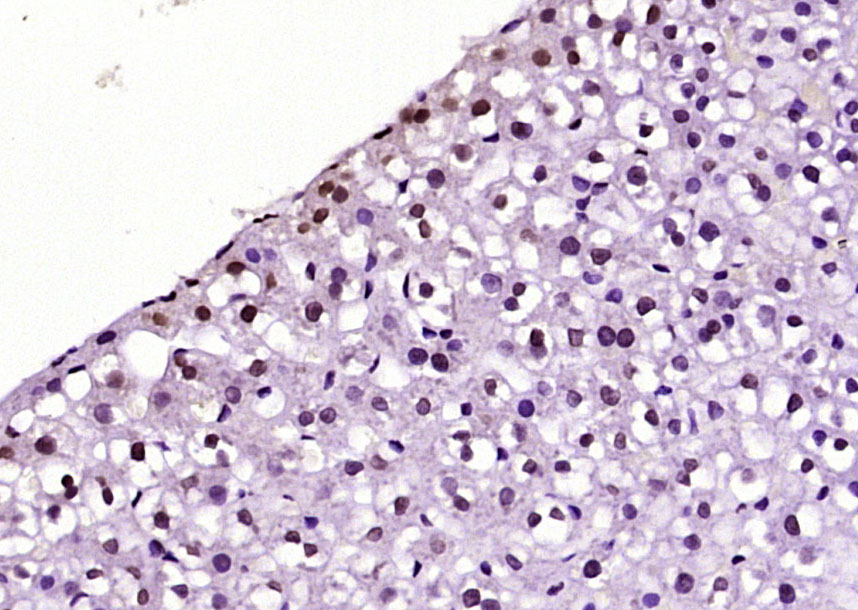
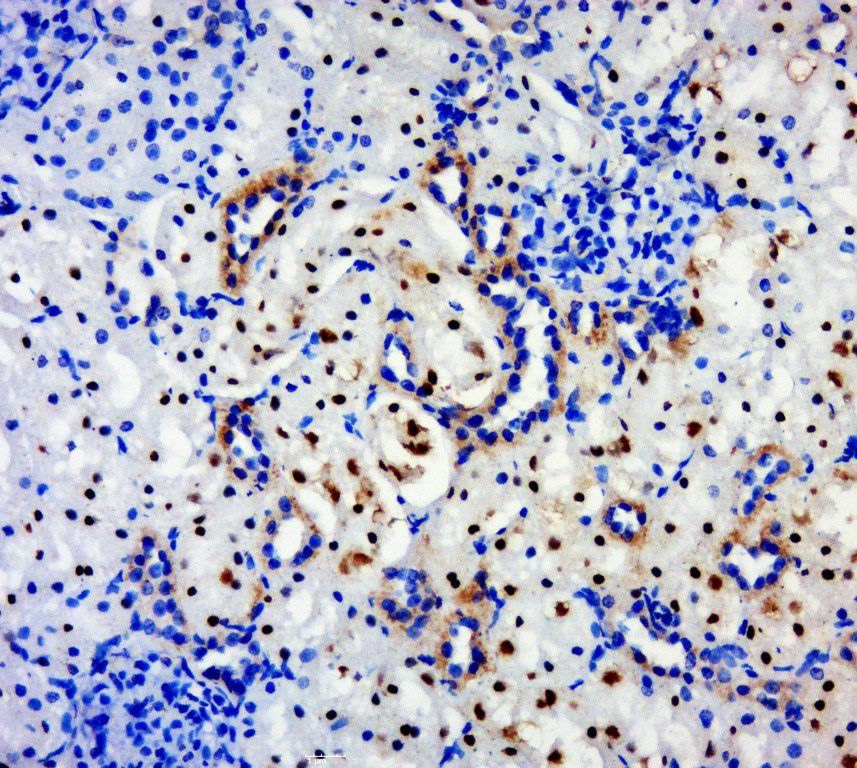
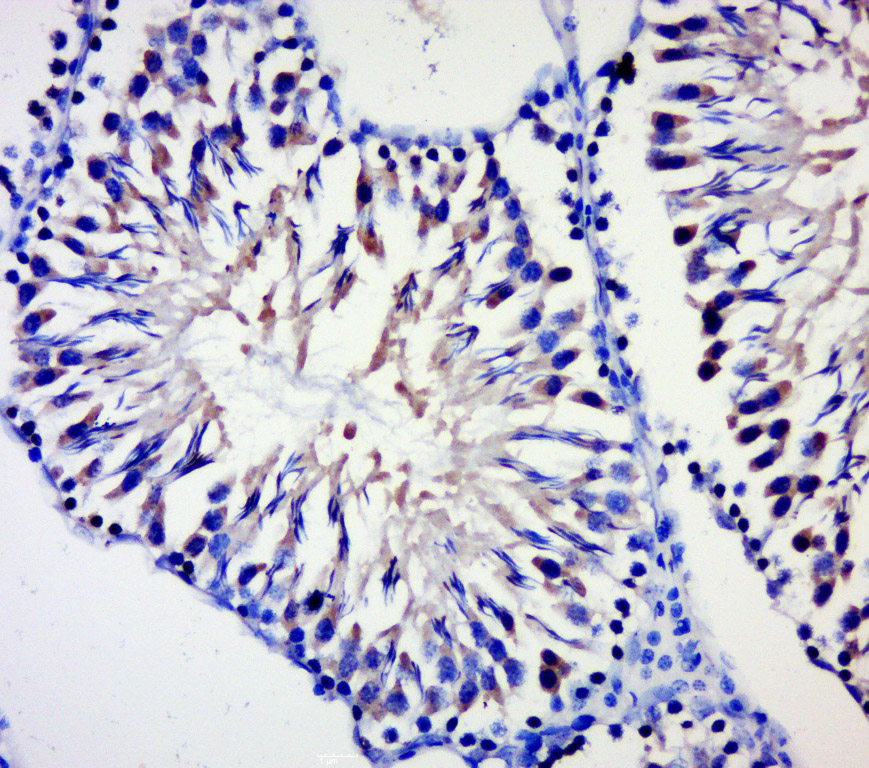
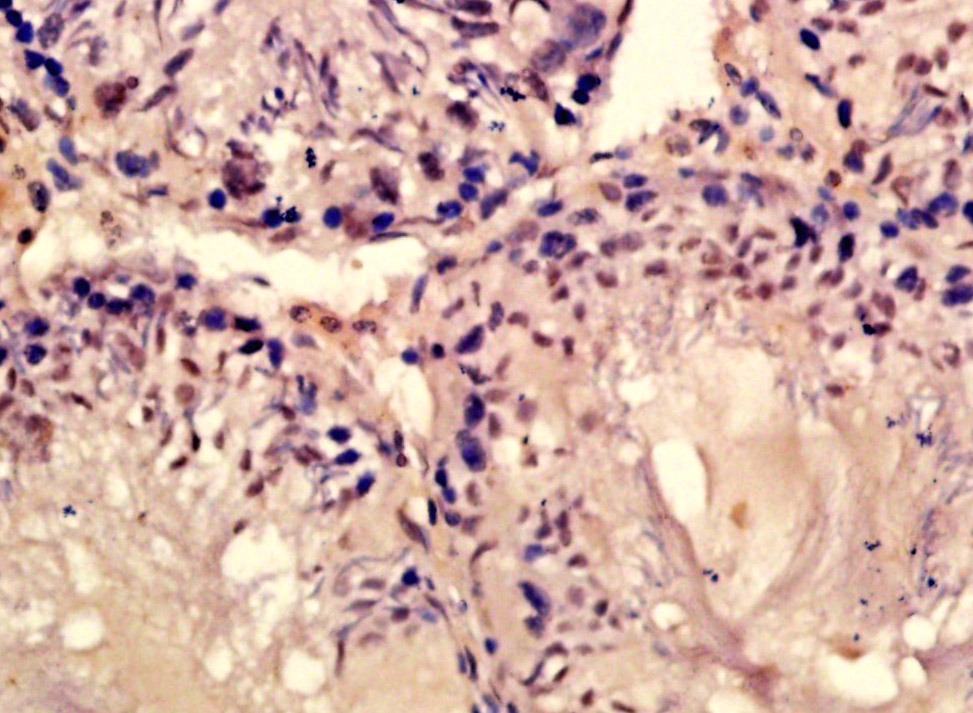


 +86 571 56623320
+86 571 56623320
 +86 18668110335
+86 18668110335

